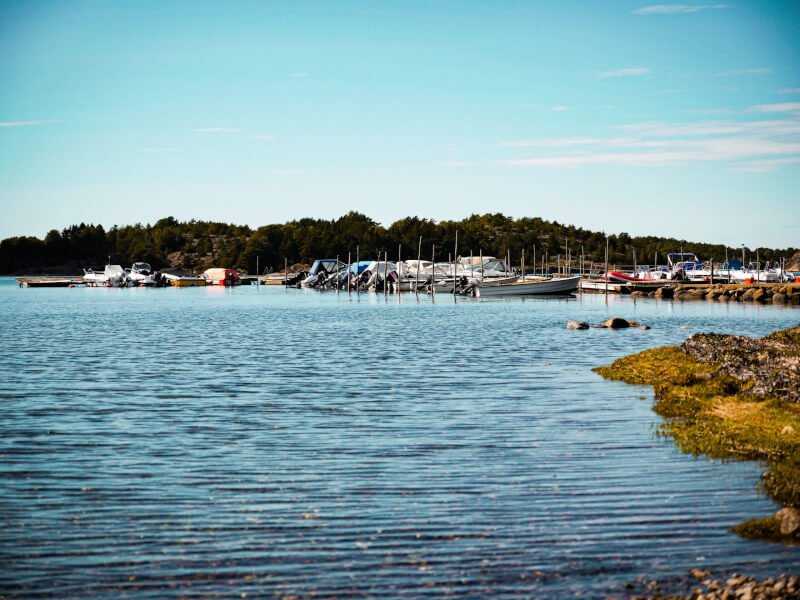Are you an avid camper looking for ways to stay cozy and comfortable during your outdoor adventures? Look no further! This article will provide you with valuable tips and tricks on how to stay warm and comfortable while camping. From choosing the right sleeping bag to layering your clothing effectively, we’ve got you covered. So, grab your camping gear and get ready to enjoy a cozy and delightful camping experience like never before.

Choosing the Right Campsite
When it comes to camping, the first step in ensuring a comfortable and warm experience is choosing the right campsite. The climate of your chosen location can greatly affect your comfort level, so it’s important to consider the weather conditions before setting up camp.
Considering the Climate
Before you embark on your camping adventure, take some time to research the climate of the area you will be camping in. Is it hot and humid, or chilly and dry? Understanding the typical weather patterns will help you determine what kind of equipment and clothing you will need to stay warm and comfortable.
Looking for Sheltered Areas
When selecting a campsite, try to find an area that offers some natural shelter. Look for spots that are shielded from strong winds, such as behind a hill or amidst dense trees. Not only will this provide protection from the elements, but it will also help retain heat inside your tent.
Avoiding Low-Lying Areas
In order to stay dry and warm, it’s important to avoid camping in low-lying areas that are prone to flooding or collecting water. These areas tend to hold more moisture, which can make it challenging to keep warm. Instead, opt for higher ground where water is less likely to accumulate.
Setting Up a Suitable Tent
Once you have found the perfect campsite, it’s time to set up your tent. A properly chosen and correctly pitched tent will not only provide shelter from the elements but also help trap heat and keep you cozy throughout the night.
Selecting the Right Tent
Choosing the right tent is crucial for a comfortable camping experience. Consider the size of your group and the season you will be camping in. Look for a tent with good insulation properties and a rainfly to keep you dry. Additionally, opt for a tent with a waterproof floor to prevent moisture from seeping in from the ground.
Setting Up the Tent Correctly
Properly setting up your tent is essential for maximum comfort. Make sure to secure all the tent stakes and guy lines to keep your tent taut and stable. This will not only prevent any drafts from entering but also ensure that your tent can withstand strong winds.
Using a Groundsheet
Using a groundsheet under your tent is a great way to insulate the floor and protect it from moisture. It acts as an additional barrier between you and the cold ground, keeping you warmer and cozier throughout the night. Make sure to choose a groundsheet that is the correct size for your tent and place it underneath before assembling your tent.

Insulating the Tent
Insulating your tent is another great technique to stay warm and comfortable during your camping trip. By creating a barrier between yourself and the cold air outside, you can retain heat and sleep soundly throughout the night.
Using a Thermal Blanket
One way to insulate your tent is by using a thermal blanket. These lightweight, reflective blankets are designed to retain and reflect body heat, keeping you warm even in chilly temperatures. Place the thermal blanket over your sleeping bag or beneath your sleeping pad to create an additional layer of insulation.
Using Tent Insulation
Thermal insulation specifically designed for tents is another effective way to keep warm. These insulation products are placed on the inner walls of your tent and help trap heat inside. Consider investing in tent insulation if you frequently camp in cold climates or during the winter months.
Adding Rugs or Mats
Adding rugs or mats inside your tent can provide additional insulation and make your camping experience more comfortable. They act as a barrier between you and the cold ground, preventing heat loss. Look for rugs or mats made of insulating materials or consider using foam or camping-specific sleeping pads.
Sleeping Gear
Choosing the right sleeping gear is essential for a cozy and restful night’s sleep while camping. From investing in a good sleeping bag to choosing appropriate sleeping pads, here’s how to ensure maximum comfort.
Investing in a Good Sleeping Bag
Investing in a high-quality sleeping bag is paramount for staying warm and comfortable while camping. Look for a sleeping bag with excellent insulation properties and a temperature rating appropriate for the weather conditions you will be facing. Consider factors like size, shape, and materials to find the best fit for your needs.
Using Sleeping Bag Liners
Sleeping bag liners are a great addition to your camping gear, as they provide an extra layer of warmth and comfort. Made of lightweight materials, liners can add a few extra degrees of insulation to your sleeping bag. They are also convenient for keeping your sleeping bag clean and can easily be detached and washed after each use.
Choosing Appropriate Sleeping Pads
Sleeping pads are crucial for insulating your body from the cold ground and providing a comfortable sleeping surface. Depending on your preference and needs, you can choose between foam pads, air mattresses, or self-inflating pads. Look for sleeping pads with good insulation properties and sufficient thickness to ensure a comfortable night’s sleep.

Dressing in Layers
Proper clothing is vital for staying warm and comfortable while camping. Dressing in layers allows you to adjust your clothing as the temperature fluctuates throughout the day and night.
Wearing Moisture-Wicking Base Layers
Start with a moisture-wicking base layer that will keep sweat away from your body and prevent you from feeling damp and chilly. Look for base layers made of materials like merino wool or synthetic fabrics that are known for their moisture-wicking properties. This will help keep you dry, warm, and comfortable throughout your camping trip.
Choosing Warm Clothing
Layering your clothing is an effective way to trap warmth. Start with a base layer, add insulating layers like fleece or down jackets, and finish with a waterproof and windproof outer layer. This combination will help regulate your body temperature and protect you from cold winds and precipitation.
Using Insulating Accessories
Don’t forget to accessorize! Hats, gloves, scarves, and thermal socks are all important items for keeping extremities warm and comfortable. These insulating accessories help retain body heat and prevent heat loss through your head, hands, and feet. Choose accessories made of insulating materials that will keep you snug even in chilly weather.
Creating Heat Inside the Tent
Sometimes, the weather may be so cold that additional measures need to be taken to create warmth inside your tent. By using portable heaters or stoves, lighting a campfire, or utilizing hot water bottles, you can ensure a toasty camping experience.
Using a Portable Heater or Stove
Portable heaters or camping stoves specifically designed for outdoor use can be a great addition to your camping gear. These devices are capable of providing a significant amount of heat, ensuring a warm and cozy atmosphere inside your tent. Make sure to follow all safety instructions and guidelines when using these devices.
Lighting a Campfire
Nothing beats the warmth and ambiance of a crackling campfire. Not only does it provide heat, but it also creates a cozy atmosphere for storytelling and gathering around with friends and family. Make sure to check and comply with local fire regulations and safety procedures when lighting a campfire.
Utilizing Hot Water Bottles
Hot water bottles are a simple and effective way to create warmth inside your sleeping bag. Fill a sturdy water bottle with hot water from a camp stove or heated camping kettle and place it at the foot of your sleeping bag. The bottle will emit a gentle heat, keeping your feet warm and cozy throughout the night.

Eating Warm Food and Drinks
In addition to clothing and shelter, warm food and drinks can also contribute to your overall comfort while camping. Here’s how to ensure you have delicious, hot meals and beverages during your outdoor adventure.
Choosing the Right Camp Cookware
Investing in suitable camp cookware, such as pots and pans with good heat distribution, is essential for cooking warm and delicious meals. Look for cookware made of lightweight materials like aluminum or stainless steel that are easy to clean and capable of withstanding high temperatures.
Cooking and Consuming Warm Meals
When planning your camping meals, include dishes that can be easily heated and consumed while warm. Opt for one-pot meals, soups, stews, or meals that can be prepared with minimal cooking times. Bringing a portable camping stove or grill will also ensure you have means to cook and heat your food on-site.
Drinking Hot Beverages
A steaming cup of hot coffee or cocoa can be a delightful treat while camping. Bring a camping kettle or a compact portable stove to heat water for your hot beverages. Don’t forget to pack your favorite tea bags, hot cocoa mix, or coffee grounds for an extra touch of warmth and comfort in the great outdoors.
Avoiding Excessive Moisture
Moisture can make camping uncomfortable and even dangerous, especially in colder temperatures. By properly ventilating your tent, using waterproof gear, and managing condensation, you can prevent excessive moisture buildup inside your shelter.
Ventilating the Tent
Proper ventilation is essential for maintaining a dry and comfortable environment inside your tent. Although it may seem counterintuitive, keeping your tent well-ventilated can actually reduce condensation and prevent the accumulation of moisture. Open the tent vents and doors slightly to allow for airflow and prevent excessive dampness.
Using Waterproof Gear
Investing in waterproof gear such as jackets, pants, and boots will help keep you dry in wet or snowy conditions. Make sure to choose gear made of waterproof materials like Gore-Tex or other breathable fabrics. Additionally, use waterproof stuff sacks or bags to store your gear and clothing, keeping them dry and ready for use.
Managing Condensation
Condensation can be a major issue when camping, especially when there is a significant difference in temperature inside and outside the tent. To minimize condensation, avoid bringing wet items into the tent, open up windows and vents to allow airflow, and consider using moisture-absorbing products like silica gel packets or desiccant pouches inside your tent.

Keeping Active
Staying active while camping not only keeps you warm but also helps maintain overall comfort and well-being. Engaging in outdoor activities, exercising before bed, and avoiding a sedentary lifestyle can greatly contribute to your camping experience.
Engaging in Outdoor Activities
Take advantage of your natural surroundings by engaging in outdoor activities during the day. Go for hikes, explore the area, or participate in wildlife observation. Not only does physical activity generate body heat and keep you warm but it also enhances your camping experience and allows you to fully immerse yourself in nature.
Exercising Before Bed
Before settling down for the night, consider some light exercise or stretching. Physical activity increases blood circulation, which can help generate body heat and keep you warm even before you crawl into your sleeping bag. A quick walk around the campsite or some simple stretches can do wonders for your comfort levels.
Avoiding a Sedentary Lifestyle
Try to avoid spending extended periods of time sitting or lying down inside your tent. Being sedentary can lead to a drop in body temperature and make it harder to stay warm. Instead, go for walks, gather firewood, or engage in other campsite chores to stay active and maintain a comfortable body temperature.
Taking Precautions for Safety
While it’s important to prioritize comfort, safety should never be overlooked when camping. By checking weather forecasts, using battery-powered lights, and familiarizing yourself with emergency procedures, you can ensure a safe and enjoyable camping experience.
Checking Weather Forecasts
Before embarking on your camping trip, make it a habit to check weather forecasts for the duration of your stay. Knowing the expected weather conditions will allow you to prepare appropriate clothing, gear, and any necessary precautions. Be aware of potential weather changes that could affect your comfort and adjust your plans accordingly.
Using Battery-Powered Lights
Having reliable lighting is crucial for navigating your campsite and staying safe after dark. Instead of relying solely on firelight or candles, invest in battery-powered lights such as headlamps or lanterns. These portable light sources will provide illumination and ensure you can move around your campsite safely.
Knowing Emergency Procedures
It’s important to familiarize yourself with emergency procedures and have a plan in place for unexpected situations. Before leaving for your camping trip, inform someone about your itinerary and expected return date. Research the nearest medical facilities, emergency services, and know how to signal for help if needed. Being prepared will contribute to your peace of mind and overall camping comfort.
By considering the climate, choosing a suitable campsite, properly setting up your tent, insulating it, selecting appropriate sleeping gear, dressing in layers, creating heat inside the tent, eating warm food and drinks, avoiding excessive moisture, staying active, and taking safety precautions, you can ensure a comfortable and warm camping experience. Remember to plan ahead, pack accordingly, and adapt to changing weather conditions to make the most of your outdoor adventure. Happy camping!


